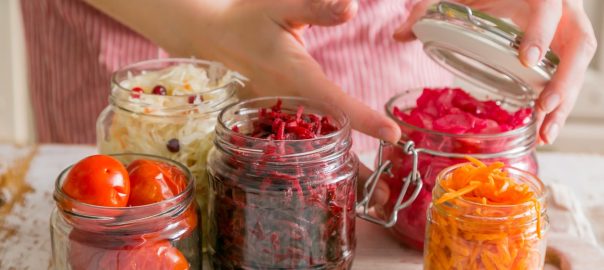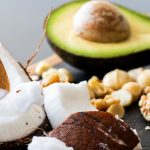
How to Pickle All Types of Vegetables
DIY Guide to How to Pickle Vegetables at Home
Pickling is one of the oldest methods of preserving foods, and yet is still popular today due to the unique flavours that it produces. We created this guide to teach you how to pickle a wide range of vegetables in the comfort and convenience of your own kitchen. It only requires a few simple ingredients and tools to get started. It is also a great way to experiment with creative flavour combinations, as the pickling ingredients can easily be customized with seasonings and spices. Plus, you can avoid additives that can be found in store bought pickled vegetables. It’s a simple, easy and nutritious way to get your veggies in!
Why Pickle Foods?
Food Preservation
The origins of pickling as a way to preserve food goes back as far as 5000 years, where ancient civilizations used this process to effectively store foods for long periods of time when food was scarce. The brine used in pickling wards off the decay of food, allowing civilizations who relied on agriculture to store food and avoid famine during temporary droughts or poor growing seasons.
Nowadays, with global food trade, we rarely have to worry about our grocery stores running out of food. However, pickling vegetables can be a great way to enjoy seasonal foods throughout the year. Pickled vegetables kept in the refrigerator can last about 5-6 months! So, you can enjoy the delicious flavours of summer vegetables during the winter, too.
Delicious Taste
Pickling gives food an acidic, sour and slightly sweet taste that can complement pretty much any other flavour! Pickled vegetables go great with cooked meats, in salads, on sandwiches, and much more. They are especially great for cutting through fatty foods, which is why they are a great addition to a keto diet. The combination of savoury flavours with the briny taste of pickled vegetables is popular in many different cultures all over the world. Think kimchi and beef stew in Korean culture, sauerkraut and sausages in German culture, pickled onions and falafel in Middle Eastern culture or preserved peppers and olives in Mediterranean cuisine (kimchi and sauerkraut are technically fermented, but the processes are similar)!
Health Benefits
Pickled vegetables still contain many of the same vitamins, minerals and antioxidants as their raw form. There is no bad way to eat vegetables (deep fried might be the exception)! In addition, the vinegar used in the pickling liquid can promote healthy digestion as well as help reduce blood insulin levels which can be beneficial for those with diabetes.
Types of Foods to Pickle
There are many different types of vegetables that are suitable for pickling. Really, you can pickle just about anything. If you are looking for low carb vegetables to pickle, some good options would be asparagus (2g net carbs per cup), bell peppers (3-5g net carbs per cup depending on colour), cabbage (3g net carbs per cup), cauliflower (3g net carbs per cup), cucumbers (3g net carbs per cup), green beans (4g net carbs per cup), olives (3g net carbs per cup) or zucchini (3g net carbs per cup). Some other tasty options such beets, carrots, parsnips, onions, and turnips can still be enjoyed on a low carb diet in moderation!
Essential Pickling Ingredients and Equipment
Here is what you will need to pickle vegetables at home:
- Clean, sterile, airtight jars – Mason jars or similar types of airtight glass jars are commonly used for pickling. Make sure they are sterilized (set in boiling water for 15 minutes) prior to use to ensure the longest possible shelf life of your pickled foods.
- Large pot – Some vegetables can be pickled raw, but there are others that may need to be cooked or blanched first. Beets for example, need to be cooked before they can be pickled. Other types of vegetables, such as green beans or asparagus, are often blanched before pickling to ensure they retain their colour and crunch. Plus, you’ll need a large enough pot to sterilize your jars.
Aside from your vegetable of choice, you’ll also need some essential ingredients to perform the pickling process. Here are the basic ingredients and seasonings you will need for a classic pickling brine:
- Vinegar – White vinegar is most commonly used for pickling, but you could choose a different type according to your personal preference. Apple cider vinegar, white or red wine vinegar, and rice wine vinegar are also suitable for pickling and can bring different flavours to your homemade brine.
- Salt – Sea salt is recommended for pickling, as it tends to be a purer form than common table salt. You’ll want to pick a salt that has no additives, so natural sea salt is the best choice.
- Sugar or sweetener – Many pickling recipes call for sugar, but again it’s up to you if you want your veggies to taste slightly sweet or not. You could substitute traditional white sugar for organic cane sugar, honey, or agave syrup to achieve the same effect. Low carb dieters can use a natural sweetener such as stevia or a monk fruit sweetener. Here is a recipe we found online that uses Swerve Granular Sweetener!
- Water – Filtered water is best for pickling to remove any “hardness” caused by high mineral content in the water. Clean and pure filtered water will also help the vegetables retain their colours longer.
- Herbs and Spices – This is another part of the pickling process that is entirely up to you to customize. Some common herbs and spices used in pickling liquids include garlic, mustard seeds, peppercorns, dill, chili peppers, coriander seeds, celery seeds, fennel seeds, and bay leaves.
Beginner’s Guide for Pickling Vegetables
This is a basic guide for making your own pickled vegetables at home. You can use this as a starting point for creating your own recipe by swapping in different types of vegetables or adding seasonings to give your vegetables more flavour.
Brine
As a general rule of thumb, use the following 1:2:1 ratio for the brine ingredients:
- 1 cup of vinegar + 2 teaspoons of salt + 1 tablespoon of sugar or sweetener
This makes for a very tangy brining liquid. If you prefer a milder taste, you could substitute ¼ cup – ½ cup of vinegar for water instead.
Seasonings
Opt for a balance of flavours when adding seasonings to your brining liquids. For example, if you add a spicy element, try balancing it with an herb-y or more floral seasoning. Here are some great flavour combinations:
- Spicy and Earthy – Red pepper flakes, mustard seed, coriander seeds, bay laves
- Savoury and Herby – Garlic, mustard seeds, dill sprigs
- Mild Spice – Celery seeds, yellow mustard seeds, white cloves
- Sweet and Spicy – Star anise, juniper berries, red pepper flakes, cinnamon sticks
- Bright and Refreshing – Ginger, mustard seed, fennel seed, black peppercorn
Preparation:
- Start with a batch of fresh vegetables and cook or blanch them, if necessary.
- Chop or slice the vegetables into your desired shape. Cut along the length of the vegetable to make long spear-shapes or slice across the width to create bite-size disks. If you have one, you could also use a crinkle-cutter to give your pickled vegetables slices some visual appeal.
- Add the sliced vegetables to your jars and add in your preferred seasonings.
- In a bowl or measuring cup combine the ingredients for the brine.
- Transfer the brine to a pot and bring it to a boil. Remove from heat and pour the brine in to the jars to just cover the tops of the vegetables. Seal the jars and refrigerate.
It usually takes a few days for the flavours of all the ingredients to develop. We recommend keeping your jars in the fridge for about 5 days before using to ensure great tasting pickled vegetables!
Here are some other pickling recipes we found online suitable for low carb diets!
- Low Carb Dill Pickles
- Quick Pickled Red Onions
- Pickled Red Cabbage – replace the sugar with sweetener to make this recipe low carb-friendly.
- Middle Eastern Pickled Turnips
- Italian-Style Giardiniera
- Pickled Banana Peppers – you can replace the sugar with sweetener in this recipe, too.
- Low Carb Zucchini Pickles
How to Enjoy Your Pickled Vegetables
Now that you’ve got a batch of your own pickled vegetables, you should learn how you can incorporate them into your diet. Here are a few suggestions for tasty low carb meals with pickled vegetables:
- Use them as a topping on a low carb sandwich or wrap. Check out our low carb sandwich breads and wraps! Here is a recipe for a low carb roast beef, arugula and pickled onion wrap. We also found this recipe for Reuben-inspired keto pickle bites.
- Top burgers at your next low carb backyard barbecue. Check out some of our low carb bun
- Make a coleslaw with your pickled cucumbers, onions and fresh cabbage – don’t forget to save the pickling liquid!
- Add them to your green salads for a tangy element. Pickled vegetables are also a great addition to egg salad or tuna salad.
- Reserve a space on your charcuterie board for pickled peppers, olives, beets or artichokes.
- Make an Italian-style antipasto or pasta salad with pickled vegetables and low carb pasta.
We hope that you found this guide to pickling helpful, and that you are inspired to try making your own pickled vegetables at home. Once you taste the difference of fresh, homemade pickles, you’ll be hooked!
Post your Pickling Experiences!
If you liked this article or want to share the results of your homemade pickled vegetables, tag us on Facebook or Instagram!
We also love to stay connected with our Weekly Newsletters for updates on the latest products and sales. And don’t forget to leave a Google Review with your Low Carb Grocery experiences!






